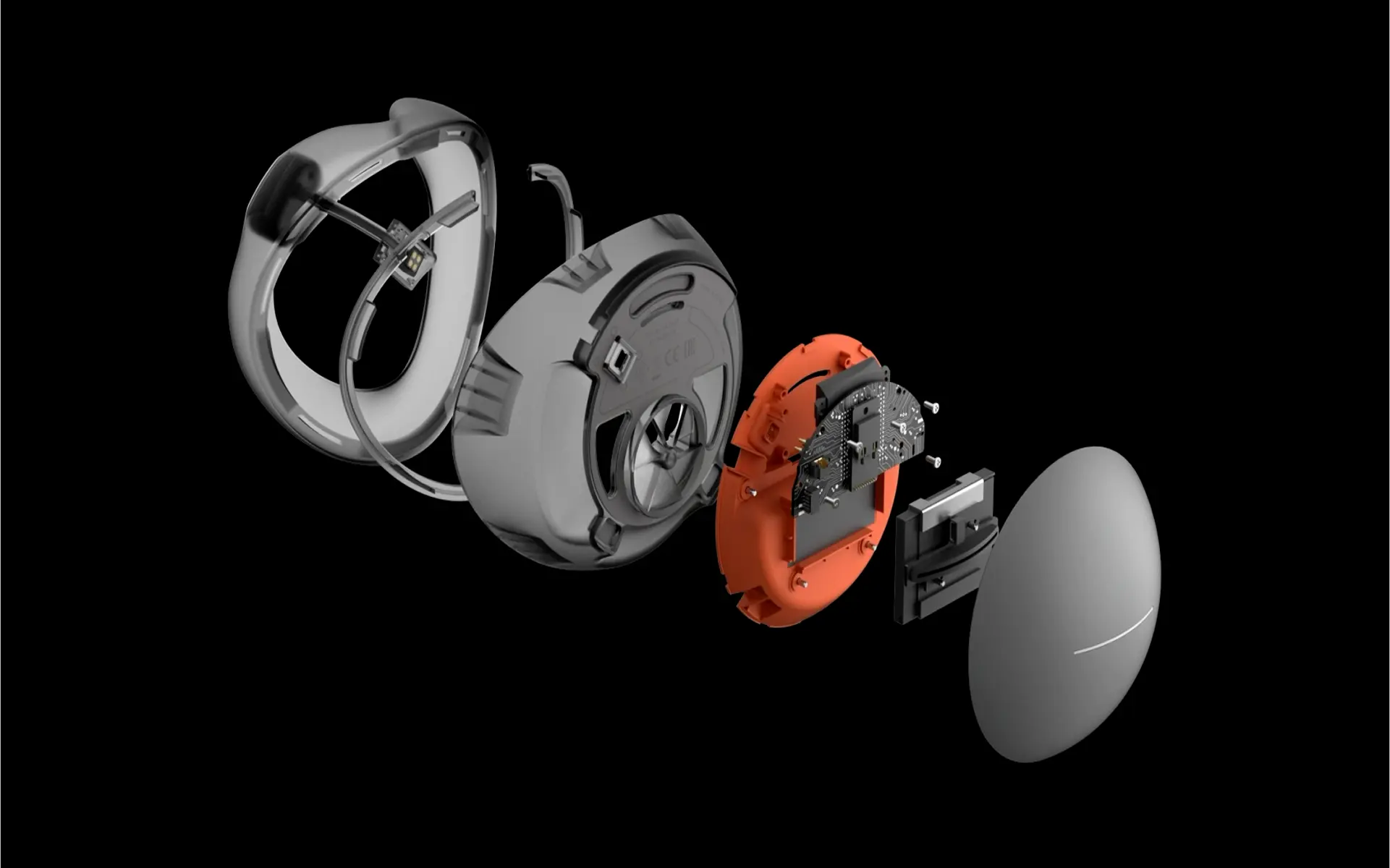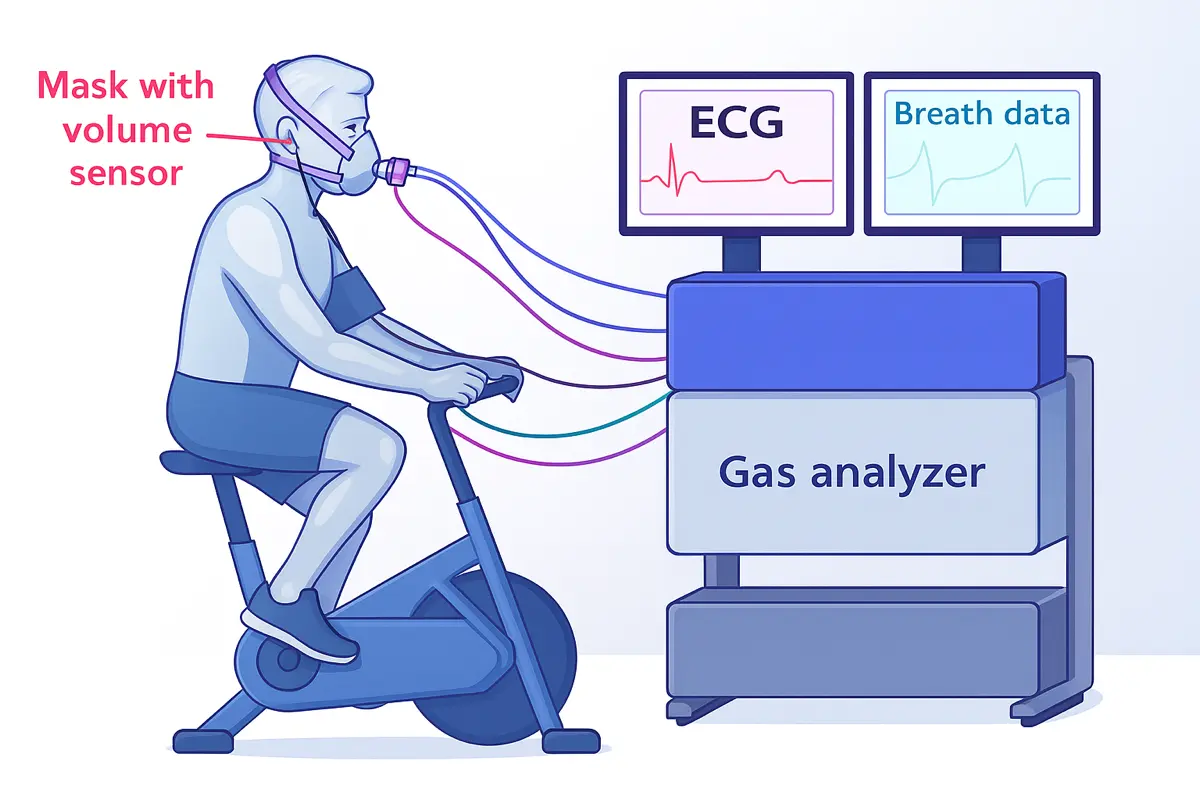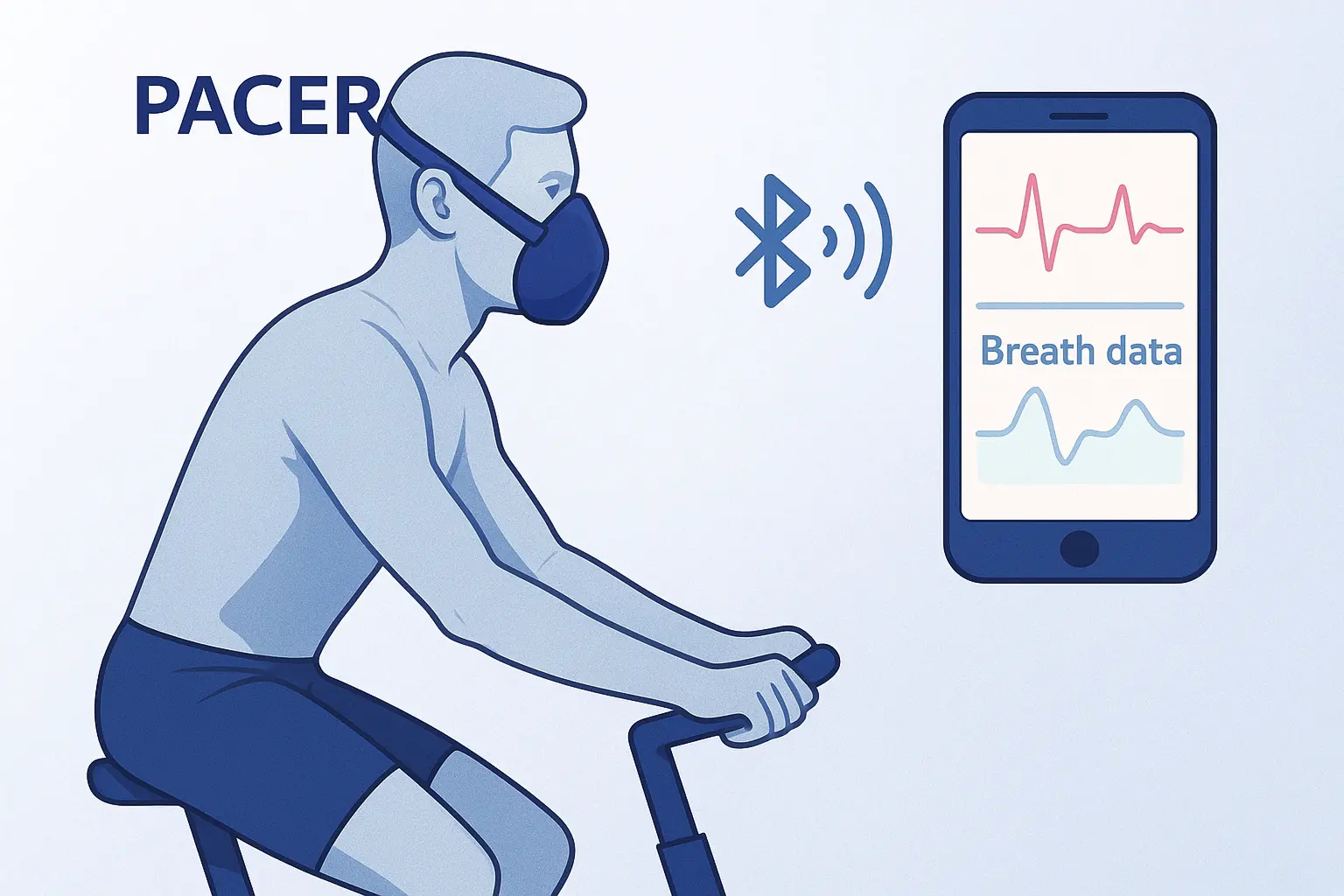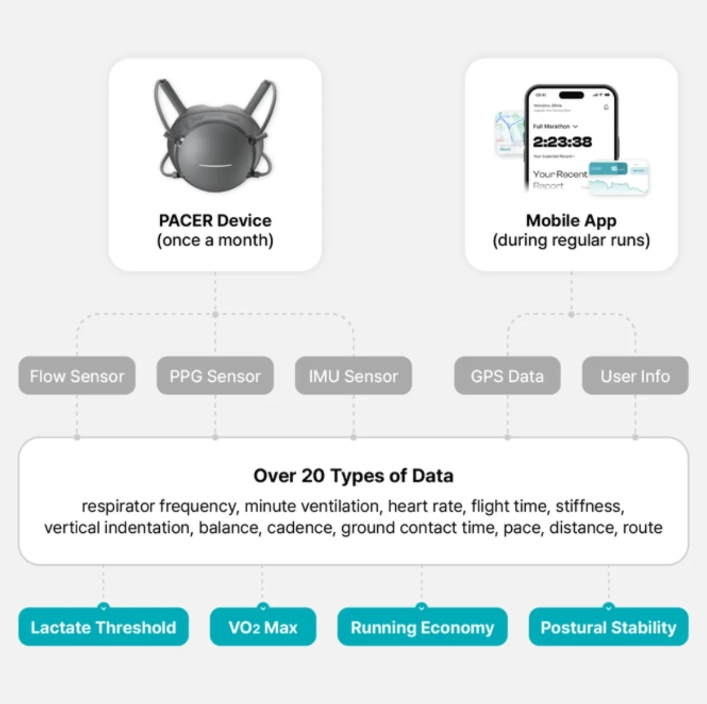
[Research] 1/60 the Price, 1/130 the Weight — Same Precision
How Does PACER Perform CPET with Both Simplicity and Precision?
The importance of CPET (Cardio-Pulmonary Exercise Testing) in aerobic performance is well established. Metrics like VO₂max, lactate threshold, running economy, and Fatmax are more than just numbers—they are scientific benchmarks for improving performance and preventing injury. Yet, until now, no one has developed a device that is as simple and precise as PACER. PACER offers VO₂max, lactate threshold, and posture stability analysis at 1/60th the cost and 1/130th the weight of traditional equipment, while maintaining lab-grade accuracy. The reason wearable CPET has long been considered impossible is clear: Gas sensors have always been essential in CPET systems. These sensors measure O₂ and CO₂ concentration differences in respiration, but they:
- Make devices large and heavy
- Require not only high initial cost but also ~$1000 in annual replacement expenses
- Need calibration before every test
Such requirements severely limited the practicality and accessibility of CPET.

PACER fundamentally solved this structural limitation. By leveraging deep relationships between biosignals and utilizing deep learning, it accurately calculates oxygen uptake (VO₂) and carbon dioxide output (VCO₂) without gas sensors. Removing the gas sensor—long seen as essential—marked a paradigm shift in CPET. PACER was built through the collaboration of exercise physiologists, AI engineers, biosignal experts, fluid/aerodynamics researchers, elite-level coaches, and ergonomic device designers.
The result? A new kind of CPET system that dramatically reduced cost and complexity without sacrificing accuracy.
Let’s explore the core technologies that made this leap possible.

Neumafit AIR Chain™
Unlike traditional CPET equipment, PACER calculates VO₂max, lactate threshold, RER, Fatmax, and running economy without any gas sensor. At the heart of this innovation lies the Neumafit AIR Chain™ (Active Integrated Respiration Chain). This proprietary system combines over 20 types of physiological and exercise data—from PACER’s built-in sensors, user inputs, and smartphone data—to model metabolic responses in high precision. Built on multivariate physiology modeling and AI-powered signal processing, AIR Chain™ allows PACER to calculate key CPET metrics like VO₂, VCO₂, and RER with lab-grade precision.
Step 1. Real-Time Data Collection from Multiple Precision Sensors
PACER uses three core sensors embedded in the mask to capture detailed respiratory and physiological data:
- Flow Sensor: Measures breath rate and volume in real time
- PPG Sensor: Detects heart rate from facial skin blood vessels
- IMU Sensor: Tracks motion and posture (e.g. bounce, cadence, vertical oscillation)
- VOCs Sensor: Measures volatile organic compounds in breath in real time
These are combined with smartphone GPS and user profile data (age, gender, height, weight), synchronizing over 20 data types for analysis.

Step 2. AIR Chain™-Based AI Processing Pipeline
All collected data is processed in real time via PACER’s companion mobile app, powered by Neumafit’s proprietary AIR Chain™ AI engine. The system performs high-level computations, including:
- Estimating metabolic state from breathing volume and patterns
- Tracking fatigue through time-series heart rate changes
- Calculating running economy using posture and movement stability
- Deriving VO₂max, RER, and Fatmax via ventilation and breathing ratios
- Determining LT1 and LT2 from heart-breath-pace relationships
Step 3. Lab-Grade Accuracy, Achieved
The AIR Chain™ doesn’t just analyze raw data—it applies personalized weighting based on user physiology, breathing habits, and exercise type. In benchmark comparisons with traditional CPET systems, PACER achieved over 97.5% average accuracy. Despite having no gas sensors, PACER accurately reproduces VO₂/VCO₂/RER curves, lactate threshold points, and substrate metabolism patterns (Fatmax) with striking fidelity.
What Has PACER Changed?
Traditional CPET equipment was bulky, expensive, and complex. Even so-called portable CPET systems required users to wear multi-kg gear, undergo manual calibration, and exercise in tightly controlled lab environments. PACER overcame all of these limitations through its AIR Chain™ system:
- 1/130 the weight, 1/60 the price
- Reliable metabolic analysis even during outdoor exercise
- Stability across diverse temperature and humidity conditions
- No calibration needed—automated AI correction
- Instant usability, even for beginners
To ensure CPET is no longer exclusive to professionals, Neumafit dismantled the entry barriers with AIR Chain™. Precise measurement. Accurate analysis. Actionable feedback. This is the new standard that PACER delivers.